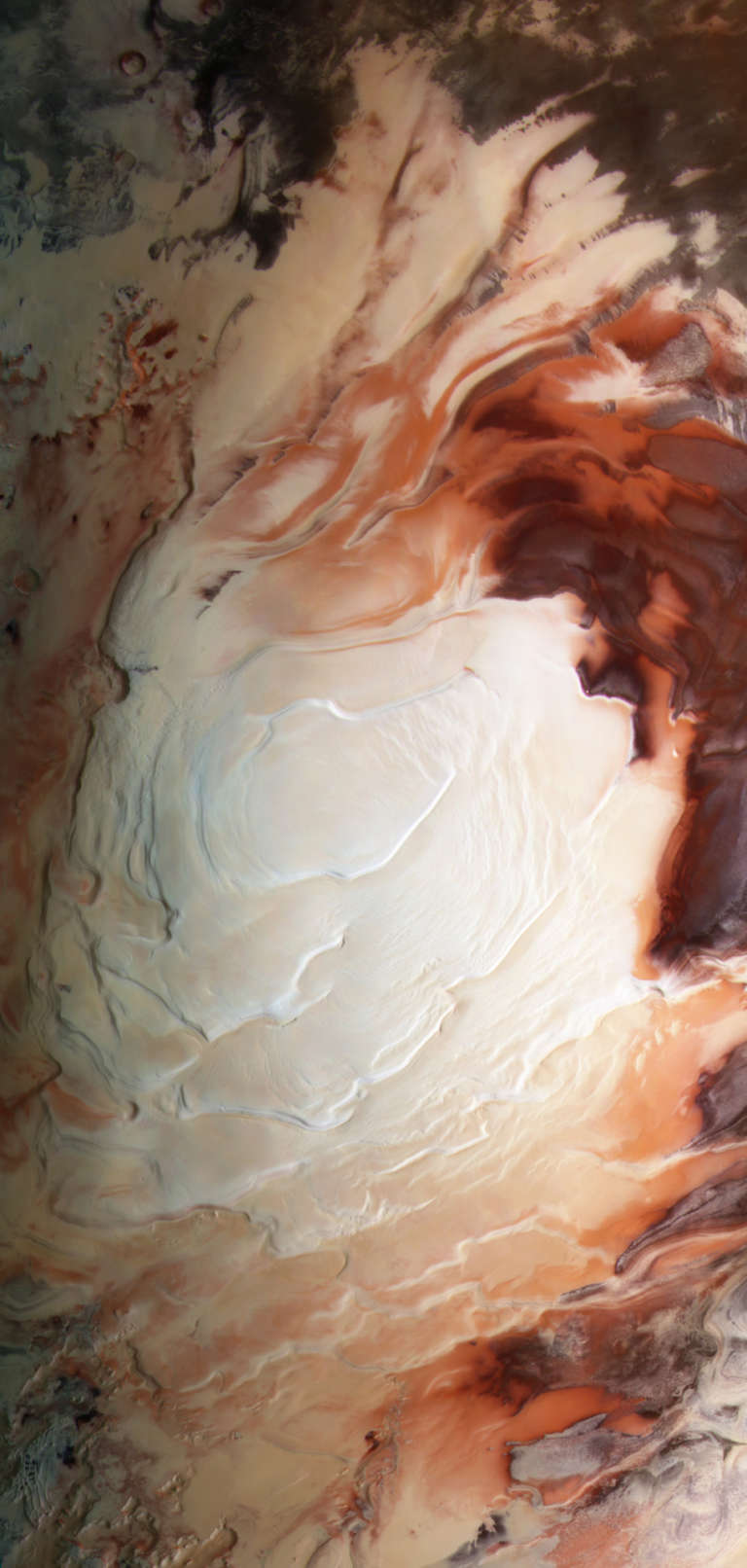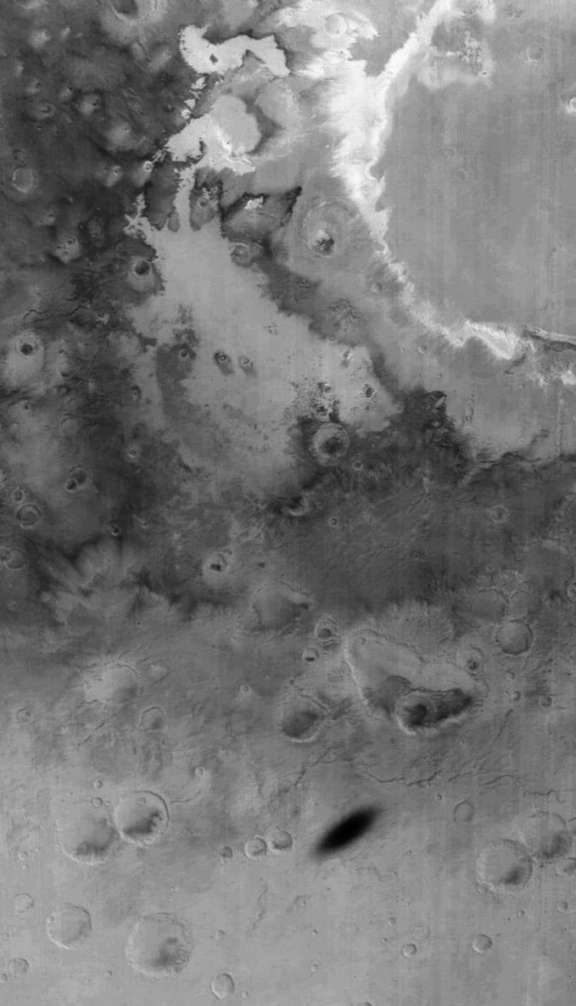Bill Dunford • Aug 12, 2013
A Turn of the Kaleidoscope
"You know what Mars is? It's like a thing I got for Christmas seventy years ago--don't know if you ever had one--they called them kaleidoscopes, bits of crystal and cloth and beads and pretty junk. You held it up to the sunlight and looked in through at it, and it took your breath away. All the patterns! Well, that's Mars. Enjoy it."
--Ray Bradbury
The Martian Chronicles
We have some fresh of views the fourth planet. I've been wandering through the landscapes found in these new images, because Mars always rewards visitors, even as it teases them by hinting at things just unseen. And because, like a kaleidoscope, the beauties of the place are often fresh and surprising every time they're seen in a new light.
These latest shots come from Europe's Mars Express mission, which has added a brand-new batch of data to its online archive. The orbit that Mars Express traces swings it over the poles, which affords spectacular views of the ice caps.

As sharp as that image is, at this scale you still can't see the famous "spider" or "swiss cheese" terrain found on the southern polar cap.
Orbital images are not always static landscapes. The Mariner and Viking probes saw planet-wide storm fronts move across the face of Mars. The Mars Reconnaissance Orbiter has caught dust devils and avalanches in the act. Here, Mars Express spies an eclipse: the shadow thrown by the moon Phobos as it passes between Mars and the sun.

We'll be back to Mars again and again. We'll probably never see everything it has to reveal.
Let’s Go Beyond The Horizon
Every success in space exploration is the result of the community of space enthusiasts, like you, who believe it is important. You can help usher in the next great era of space exploration with your gift today.
Donate Today

 Explore Worlds
Explore Worlds Find Life
Find Life Defend Earth
Defend Earth

